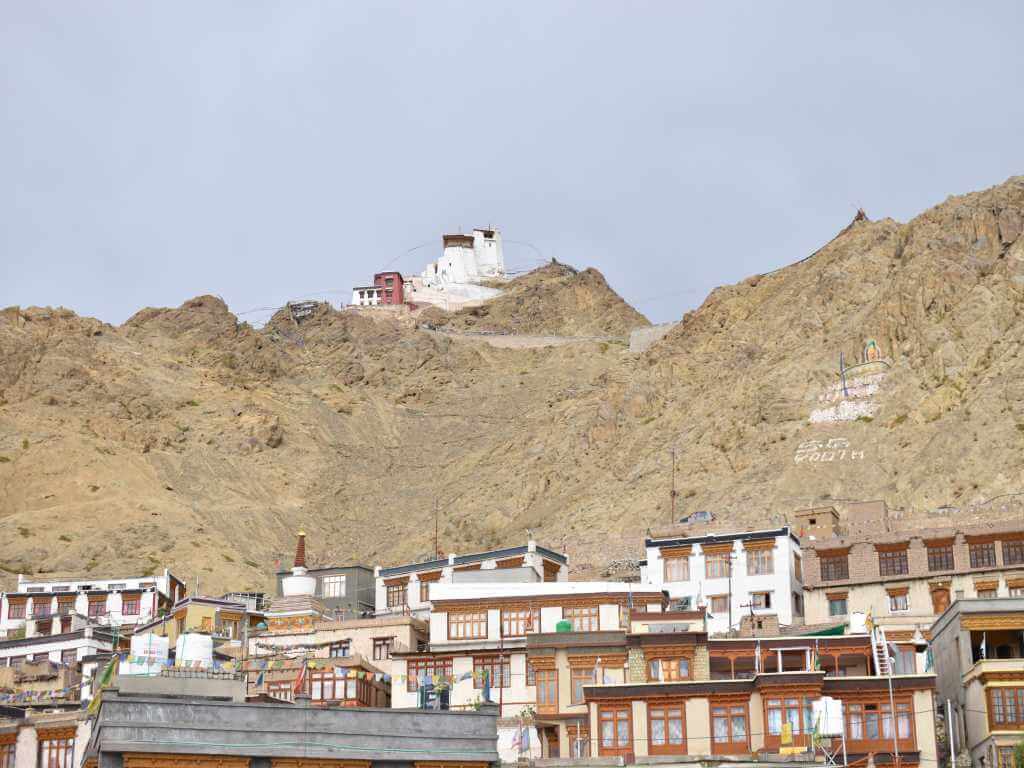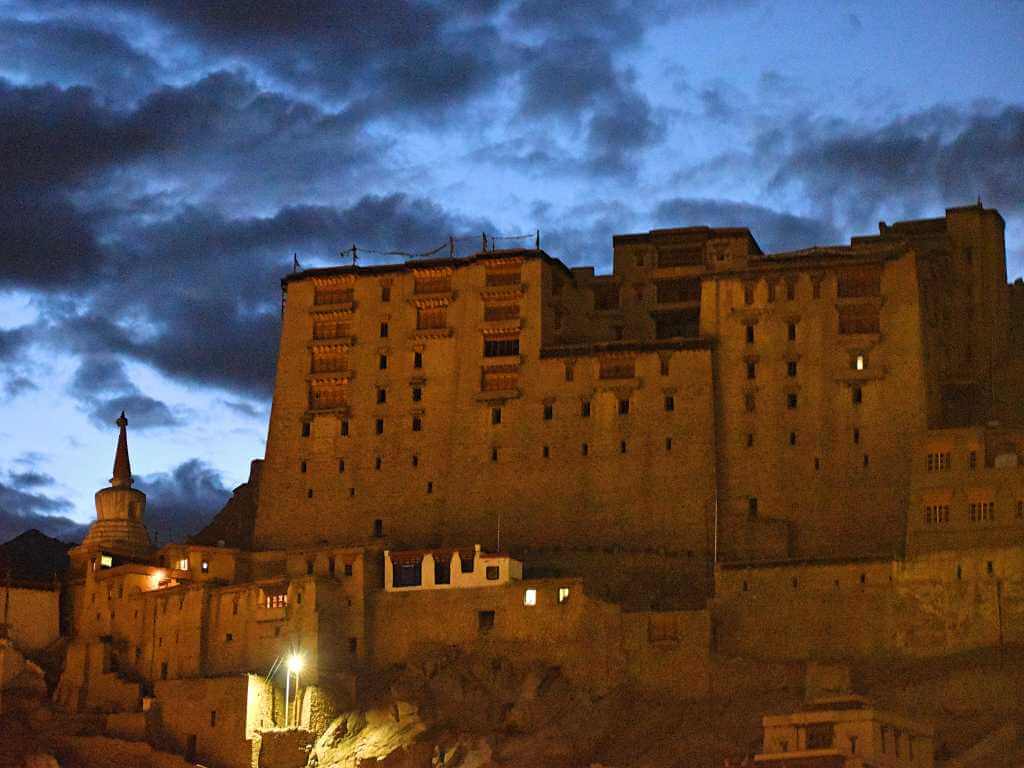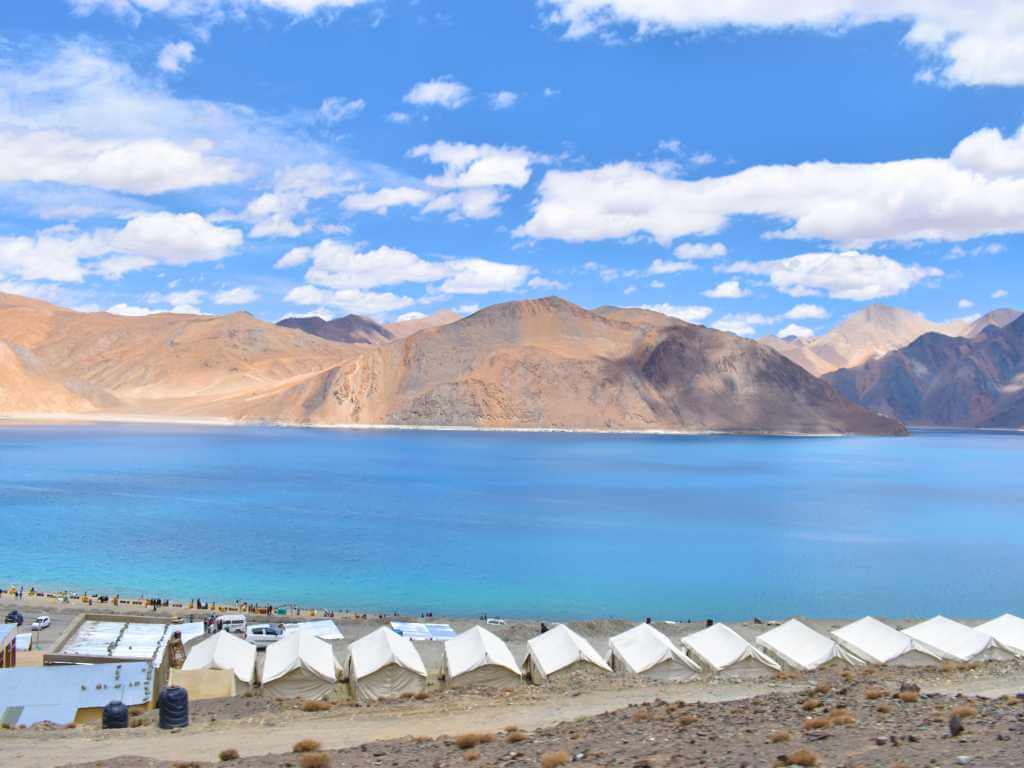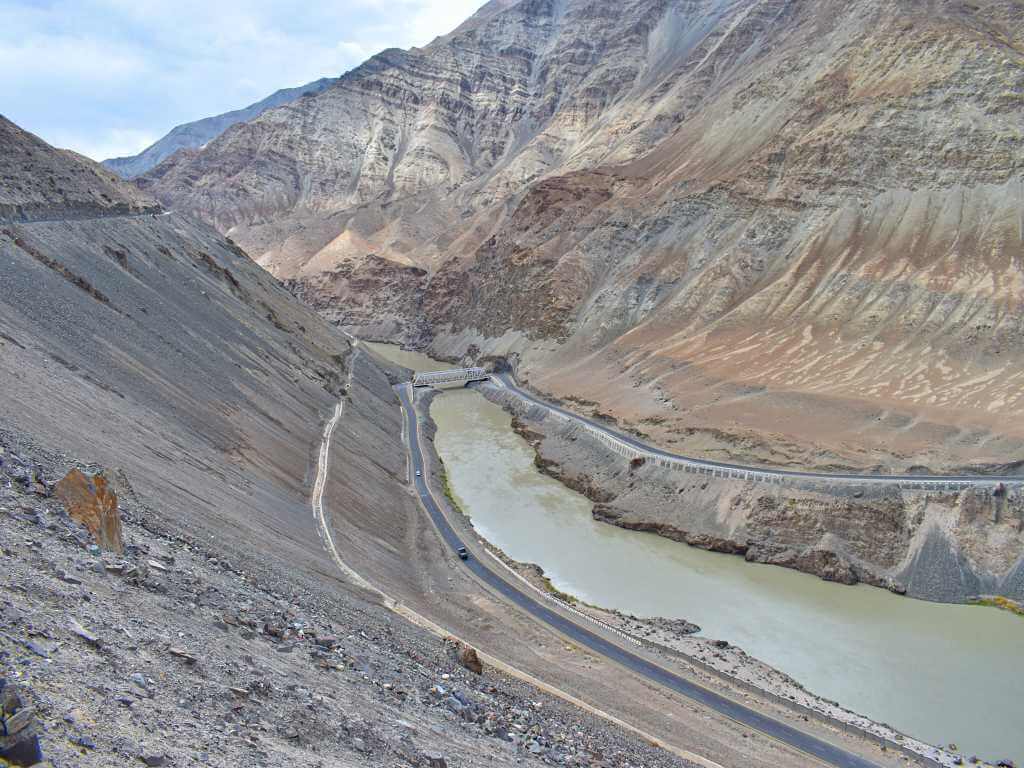Ladakh Leisure Tour : Experience the Land of Lamas & High Passes
" a curated leisure tour to explore the best of Ladakh "
Often referred to as the land of lamas and high mountain passes, Ladakh is a place like no other. The cold desert region bordering Tibet is situated at an average altitude of over 11,000 feet. Its rugged terrain, unique geography, and cultural similarities with Tibet makes it a fascinating place for travellers.
This seven-day curated holiday tour in Ladakh takes crucial acclimatization into account and combines the best and most attractive sites of the region. The itinerary puts an equal focus on absorbing and understanding the local culture as well as marvelling at the scenic beauty of the land. We explore the great ancient city of Leh, the magnificent sights along the Indus river plus the unforgettably blue vistas of the Pangong Lake.
Offering splendid views throughout, the road trips cover some of the most beautiful stretches of the region including the grand sweeping views of Nubra Valley. Travellers also get to walk the extraordinary Hunder Sand Dunes, cross the high-altitude mototrable passes of Khardung La and Chang La, and even venture offbeat to explore an apricot paradise – the stunningy remote village of Turtuk on the Indo-Pak Border.
The Ladakh leisure tour is perfect for families, couples or small groups who want a comfortably-paced and enjoyable leisure holiday to witness this unique territory in all its stellar glory.
- Duration: 7 days (Leh to Leh)
- Region: Ladakh, India
- Time: May to November
- Type: Curated Leisure Tour
- Accommodation: Hotels / Cottage Camps
- Pick Up / Drop: Leh Airport
EXPERIENCE ITINERARY
Day 1: Welcome to Leh (11,500 ft)
- Morning Arrival in Leh – Airport Pick Up – Hotel Check In
- Rest, Relax and Acclimatise in Hotel | Later, visit the local markets
- Overnight at Leh Hotel
Day 2: Leh Local Exploration
- Today, cover the popular local sights in and around Leh town
- Visit the Hall of fame, Spituk Monastery, Magnetic Hill, Gurudwara Pathar Sahib and Zanskar – Indus River Confluence (the Sangam). In the evening visit Leh Palace for magnificent city views and finally enjoy the sunset from Shanti Stupa
- Overnight at Leh Hotel
Day 3: Leh to Nubra Valley via Khardung La (5-6 hrs)
- After two days of acclimatisation and local tours, head out deeper into Northern Ladakh
- Drive to Hunder, Nubra Valley via Khardung La Pass (one of world’s highest motorable passes – 17582 ft)
- Arrive at Diskit town, visit the Monastery and the giant Maitreyi Buddha Statue
- Later explore the Hunder Sand dunes and see the double-humped Bactrian camels
- Overnight in Hunder Hotel
Day 4: Turtuk – Day trip to Indo-Pak Border Village (2 hrs)
- Wake up to a picture-postcard morning in Hunder
- After breakfast, drive to the enchanting Turtuk, one of the last villages on the Indo-Pak Border, with the Gilgit-Baltistan region on the other side
- Soak in the wonderfully lush landscapes of Turtuk, a village also famous for its apricot trees and friendly residents who have a distinct Balti culture
- Drive back to Hunder – Overnight in Hunder Hotel
Day 5: Nubra Valley to Pangong Lake via Shyok (6-7 hrs)
- Start early morning from Nubra Valley along the Shyok river towards Shyok village.
- Today is another breathtaking road trip along the Shyok river (keep an eye out for the cute little Marmots!)
- Cross Shyok, Durbuk and Tangtse villages to reach the beautiful Pangong Tso – the popular alpine lake of Ladakh
- Get awestruck with the bluish views of the lake, changing colours constantly
- Overnight at Hotel/Cottage Camp in Pangong
Day 6: Pangong to Leh via Chang La Pass (6-7 hrs)
- Return to Leh via Chang La, another high-altitude Pass with stunning views enroute
- Optional visits to Thiksey Monastery and Shey Palace on the way back
- Arrive at Leh and spend the evening at leisure/shopping in the local markets
- Overnight at Leh Hotel
Day 7: Until Next Time!
- Bid farewell to the gorgeous landscapes of Ladakh
- After breakfast, transfer to airport and depart for home
Experience Highlights
1. The grand old City of Leh








At an altitude of 11,500 ft above sea level, the city of Leh is one of the most unique places to visit in India. Encircled by desolate mountains, rugged valleys, and barren landscapes, this city is an oasis in the middle of a cold desert.
An ancient trading hub built besides the Indus river, Leh is the city of mud-brick homes and whitewashed monasteries. It is surrounded by a mix of green farmlands and yellow-brown deserted patches that rise upward to blend in with the snow-covered peaks overlooking the city.
Being the erstwhile capital of the Kingdom of Ladakh and the former residence of its royal family, it is well-known for its rich cultural heritage and the sacred ancient monasteries dotted in and around it.
Much of the place’s charm rests in its medieval old town which is a historic and cultural hub located in the heart of the city. The old town, also known as Kharyog, is characterized by a maze of narrow alleys, mini buddhist stupas and traditional Ladakhi houses.
The houses are built with mud-bricks, feature flat roofs and intricate wooden carvings. One of the most prominent landmarks here is the Leh Palace, a nine-storey royal abode built in the 16th century by King Sengge Namgyal.
The palace offers breathtaking views of the city and the surrounding mountains, and is now open to the public as a museum. With vibrant local markets, traditional bakeries, a variety of restaurants, cafes, and shops offering local handicrafts, trinkets and souvenirs.
2. Turtuk Village on Indo-Pak Border
Turtuk is a small, little-known village sitting at the far end of Ladakh’s Nubra Valley. The undisturbed village is situated on the banks of the Shyok River and hemmed in by the high peaks of the Karakoram mountain ranges.
It was once an ancient trading hub that fell on the great Central Asian Silk Route. With a rich past, fascinating culture and tumultuous recent history, the beautiful village is one of the best places to visit in leh ladakh.
Counted among the northernmost villages of India, it lies just a few Kms from the Line of Control between India and Pakistan. Geographically, the place was in the Baltistan region under the control of Pakistan.
It was populated by Balti people, an ethnic group of Tibetan descent who mostly inhabit the Skardu and Gilgit-Baltistan region on the other side of the border. During the war of 1971, the Indian soldiers captured Turtuk and since then, it became part of the Indian territory.
Turtuk was finally opened up to tourism in 2009-10 allowing travellers to explore the village and way of life of local Balti residents. While most parts of Ladakh have a strong Tibetan Buddhist influence, this region has a distinct Balti Muslim culture.
The village’s tradtional architecture, the stone-walled structures and their sustainable ways of living are an important cultural heritage that the residents have still continued to carefully preserve.
Apart from its unique culture, the riverside hamlet is famed for its apricots and walnuts. An oasis of green in contrast to its brown desolate surroundings, the village also wows its visitors with its impressive scenic beauty. A trip to Turtuk on the Leh Ladakh Leisure Tour is surely a spellbinding experience to remember.




3. Sweeping views of Nubra Valley via Khardung La









Nubra Valley is undoubtedly among the best and most popular places to visit on any Ladakh trip. Nubra is a high-altitude cold desert located deep in the northern part of Ladakh between the Karakoram Ranges to the north and the Ladakh Range to the south.
It is known for its stunning terrain, majestic views, and clear blue skies.
The valley is drained by the Nubra River and Shyok river that are fed by the melting snow from the surrounding mountains. Both are vital sources of water for all the tiny villages and settlements found along the rivers.
The drive from Leh takes about 4-5 hours and is one of the most memorable journeys in Ladakh. Enroute travellers get to cross Khardung La located at 17,582 ft and one of the world’s highest motorable passes.
The narrow pass covered with Tibetan prayer flags offers splendid views of the surrounding mountains and glaciers, and is an impressive spot for visitors to take photographs.
Nubra is also home to several Buddhist monasteries, including the Diskit Monastery, which is the oldest and largest monastery in the Nubra Valley, and the Samstanling Monastery, which is located in the village of Sumur.
The Diskit Monastery also houses a massive statue of Maitreyi Buddha that offers panoramic views of the surrounding area.
One of the main attractions of Nubra on this Ladakh leisure tour is the Hunder Sand Dunes. The silvery-grey sand dunes area is a striking landscape with its own unique ecosystem. The remarkable dunes are said to have formed due to a combination of aeolian (wind) processes and fluvial (river) processes.
The dunes are constantly shifting and changing shape, creating a constantly evolving landscape. One can see the rare double-humped Bactrian camels once brought along by travellers and traders from regions up north in modern-day China and Mongolia.
4.The Iconic Pangong Tso
The Pangong Tso or the Pangong Lake is probably the most popular destination on this trip. Known for its crystal-clear waters and awe-inspring views, the mesmerizing blue lake is guarded by barren rocky mountains.
It is perched at an elevation of about 14270 ft above sea level on the Indo-Tibetan border. Interestingly, only one-thirds of this 134 Km long lake lying inside the Indian Territory. During winters the lake freezes completely turning into a massive flattened ice block flanked by white mountains.
Depending on the time of the day, cloudplay and the angle of the sunlight the Pangong Tso changes colours displaying multiple shades of blue.
A photographer’s delight, the area offers breathtaking shots with the waters of the lake standing in stark contrast to the surrounding arid mountains and clear blue skies above. It is also a heaven for wildlife enthusiasts, especially birdwatchers.
A variety of bird species, including gulls, brahmini ducks, black-necked cranes and bar-headed geese can be found here. The accommodations for travellers are arranged in Camping huts and Cottages located in small villages along its banks.
Overall, the Pangong lake’s extraordinary natural beauty, combined with the peaceful and romantic atmosphere, makes it an unforgettable place to visit.






5. Sangam: The Zanskar-Indus Confluence






Sangam is another scenic highlight on this Leh Ladakh leisure tour. The road journey to the Sangam point itself is captivating.
Located between the famous Magnetic Hill and the village of Nimmoo on the on Leh-Srinagar highway, Sangam is the confluence point of the Indus(Sindhu) and Zanskar Rivers. About 40 Kms from the Leh city, the two main rivers of Ladakh meet here creating a stunning view from above.
The flow of the two rivers at Sangam changes according to the season. The colours of these rivers also appear distinctly differen from one another.
The colours range from muddy to blue to azure to light green depending on the season and the prevailing local weather. The Sangam also has a river rafting point which is active during the summer season.
Here, adventure enthusiasts can come and experience a thrilling ride over the rapids on the Zanskar.
Ladakh Leisure Tour FAQs
Ladakh is a centrally-administered union territory located in the northernmost part of India, surrounded by the Karakoram and westernmost Himalayan mountain ranges. Due to its geographical proximity and strong links to Tibetan culture, it is also called the ‘Little Tibet’ of India. It is bounded by Jammu and Kashmir Union Territory to the west and by the state of Himachal Pradesh to the south. Leh is the union territory’s largest urban center that shares its administrative powers with Kargil, the other major city. The region shares an international border with the countries of China (Tibet Autonomous Region) to the east and Pakistan (Gilgit-Baltistan) to the North-west. Ladakh is known for its magnificent landscapes, unique cold-desert terrain and its vibrant Buddhist culture.
There are multiple ways to reach Ladakh. It depends on your preference, your starting point and the season. Ladakh can be reached by both air and road. The most convenient way is to take a flight directly to Leh airport. Alternatively, one can embark on a scenic road trip via Manali or Srinagar highways. Here are the most common methods of reaching Ladakh.
How to reach Ladakh by air?
The easiest and the quickest way to travel to Ladakh is by air. The Kushok Bakula Rimpochee Airport at Leh, located just a few kms away from the main center of the city, connects it with the rest of the country via regular flights. Leh airport is one of the highest airports in the world. There are a number of flights flying to Ladakh during the peak season and also during the off-season. The flight to Leh offers magnificent aerial views enroute and is in itself a highlight to your trip.
How to reach Ladakh by road ?
There are mainly two motorable routes to reach Ladakh, the Srinagar-Leh Highway and the Manali-Leh highway. The former connects Kashmir region with Ladakh via the Zoji La Pass and covers a distance of around 420 Kms from Srinagar to Leh. The latter option, Manali-Leh highway connects Manali in Himachal Pradesh to Leh via the Tanglang La Pass and Atal Tunnel, covering a distance of around 435 Kms from Manali to Leh. To reach Leh by road you can hire a private cab , shared taxis or board public buses (JKSRTC / HPTDC ). It is important to note here that one can only travel to Ladakh by road between May to September as during the winter months the high passes get blocked and highways are shut due to heavy snowfall.
How to reach Ladakh by train?
You cannot reach Ladakh directly by train as there is no train station in Ladakh. The nearest railhead to Leh Ladakh is the Jammu Tawi railway station. It is at a distance of about 680 km from Leh city. There are a number of trains plying from major Indian cities to Jammu and is well connected with Delhi, Kolkata and Mumbai. Upon reaching the Jammu Tawi railway station, travellers can hire private taxis, cabs or opt for state bus services to reach Ladakh.
The best time to visit Ladakh is during the summer months ( May – September) with the peak season being in July and August. During this time the weather is pleasant, the temperature remains comfortable and almost all roads and destinations are accessible. April-May usually marks the start of major roads and high passes opening up. The sun shines brightly, the snow starts melting and Ladakh is all set to welcome and greet visitors from all over. As the summer progresses, the weather turns exceptionally pleasant for travel with July and August being the warmest months in most areas. These two months also happen to be the wettest months but the rainfall received is relatively less compared to other regions of the North. With crisp blue skies, impressive landscapes and with the frozen alpine lakes giving way to blue shimmering waters, the region is at its scenic best. At Leh, the temperatures range from 5°C to 25°C during the summertime while some of the remote higher-altitude regions are colder.
With many routes open, this is undoubtedly the best season for adventurous activities like camping, trekking, mountain biking, rafting and other activities. This is also when some of the most revered and significant Buddhist festivals are celebrated namely Yuru Kabgyat in Lamayuru Monastery and the Hemis Festival or Tse-Chu at the Hemis Monastery.
The temperatures in Ladakh steadily drop from October onwards. During the winters, the mercury levels drop sub-zero with the higher regions like Tso Moriri, Pangong or Nubra experiencing significantly colder temperatures. The latter phase of winters from November to Early March can be harsh. Some of the higher elevation regions may be extremely unbearable with minimum temperatures reaching as low as -15°C. As uncomfortable as they are, the winter months are also much more peaceful and less-crowded. They are best suited for offbeat adventurer enthusiasts. The winter is the ideal time to see the frozen natural beauty of ladakh – from giant white lakes to towering frozen waterfalls. A few interesting experiences during the winter include the Chadar Trek and the Snow Leopard experience. The Chadar Trek is an incredible adventure that involves walking the frozen Zanskar river, and the Snow Leopard Trek is where hikers and wildlife enthusiasts tread through snow to track these ‘grey ghosts of the mountains’ that descend from high peaks during the winters. Some of the traditional monastery festivals, such as the Thiksey Festival, Spituk Gastor and Losar are also celebrated with great fervor during the winter.
Yes, acclimatization is crucial due to the high altitude nature of Ladakh. Leh city in Ladakh is situated at an altitude of around 3,500 meters (about 11,500 feet) above sea level, and many destinations in the region are located at even higher elevations. All visitors, especially those flying into Leh, must spend at least 24-48 hours resting and avoiding strenuous activities upon arrival. This is important to minimize the risk of altitude sickness or acute mountain sickness(AMS).
Acclimatization is the process by which your body adjusts to the lower oxygen levels at high altitudes. It is important that you stay hydrated and avoid any strenuous physical activities during the first 2 days of arrival. During your stay in Ladakh, be mindful of any signs or symptoms of altitude sickness. If you experience symptoms like consistent headache, dizziness, fatigue, vomiting etc. it’s best to descend to a lower altitude and seek medical attention. Proper acclimatization on your arrival will enable you to experience and enjoy Ladakh without compromising your health.
From ancient monasteries to vast alpine lakes, Ladakh offers numerous breathtaking places to explore. Some of the popular and famous places that attract tourists from all over the world include Leh Palace, Spitik Monastery, Pangong Lake, Nubra Valley, Hunder Dunes, Magnetic Hill, Shanti Stupa and Diskit Monastery, among others. Apart from these touristy spots, travellers may explore many other lesser-known villages and locales in Ladakh that offer the perfect serenity in the lap of nature.
In Leh Ladakh, visitors require permits only when visiting certain specific areas of the territory. No Permits are required to visit Leh or Kargil cities but both Indian and foreign tourists require permits to visit certain restricted areas in Ladakh. These Restricted Areas are mostly border areas, located near the Line of Control LOC (border with Pakistan) or the Line of Actual Control LAC (border with China). Some of the restricted areas include Nubra Valley, Tso Moriri lake, Pangong, Siachen etc.
An Inner Line Permit (ILP) is a compulsory travel document required to visit these restricted areas. It is called Protected Area Permit (PAP) when applicable for foreigners. Both permit documents are easy to obtain with the necessary documents. For ILP, Indian citizens need to provide a valid identity proof while foreigners have to provide a valid passport with Visa or OCI to obtain their PAP.
However, please note that the permit requirements and procedures change from time to time. It is essential to check the latest guidelines and requirements. You can contact us for the latest updates.
Yes of course, Ladakh is open to foreign tourists. With its stunning landscapes, unique culture, and a wide range of adventurous activities, Ladakh attracts travellers from all around the world. No permits are required to visit Leh city but foreigners must obtain Protected Area Permit (PAP) when planning to visit restricted border areas.
While it’s an easy process to obtain the PAP that is locally issued in Leh, it’s important to note that for citizens of few specific countries, the procedure to obtain the permit is different. Travellers from Afghanistan, Bangladesh, China, Myanmar, Pakistan, Sri Lanka and Hong Kong will not be able to obtain a permit from Leh city. They will have to apply for an Inner Line Permit from the Ministry of Home Affairs in New Delhi. This is also applicable for foreigners holding a diplomatic passport.
Indian citizens need to provide a valid government-issued identity proof (Aadhaar etc.) for obtaining their Inner Line Permits (ILP) while foreigners have to provide a valid passport with Visa or OCI to obtain their PAP.
Travelling to Leh Ladakh is considered very safe for tourists. Over the years, the himalayan region has seen a dramatic increase in tourism, and the local authorities gradually have become very well-equipped to handle all visitors. Due to its proximity to the international border, there are recurring incidents at the China border (LAC) from time to time, but these usually do not affect the tourist circuits.
When travelling in Ladakh, visitors should also be cautious about altitude sickness due to high elevations and plan a gradual acclimatization period. When venturing deeper into the territory, especially very remote areas, travellers must be prepared for challenging road conditions at some places. It’s also essential to obtain necessary permits for restricted areas, be mindful of extreme weather conditions, and carry basic medical supplies. When visiting monasteries and villages, respecting local customs and being environmentally responsible are extremely crucial. Staying informed, using reputable tour operators, and following safety guidelines will help ensure a safe and enjoyable trip to this stunning region. Overall, Ladakh is perfectly safe for travel but like any other destination, it is always important to verify the current travel conditions and check for any government advisories before planning your visit.
Yes, Ladakh is a suitable destination for families including children and seniors but with proper planning and precautions. Due to its high altitude, it’s crucial for all members of the family to properly acclimatize and take it slow upon arrival to minimize the risk of altitude sickness. To make your Ladakh trip enjoyable, make sure to plan a well-paced itinerary, include acclimatization days, choose family-friendly accommodations, and ensure reliable and comfortable transportation with experienced local drivers. Although it’s rarely used, ensure you have an emergency oxygen cylinder in your car when visiting remote places at higher elevations like Nubra Valley and Pangong Lake. It’s recommended to avoid these destinations for individuals with pre-existing serious health conditions. Overall, with proper planning and careful consideration of everyone’s health and comfort, Ladakh offers a unique and rewarding experience for families.
Yes, you can easily rent bikes in Leh for local sightseeing and exploring nearby attractions. Make sure to carry a valid driving license and complete the necessary documentation as required by the rental shop.
Like Kashmir, in Ladakh too prepaid mobile connections issued outside the territory do not work. Only locally issued prepaid sims and Postpaid connections will work. The mobile network and internet connectivity in Leh Ladakh have significantly improved over the years. In the main cities of Leh and Kargil, all network providers like Airtel, Jio, Vodafone and BSNL have good reception and data connectivity. Internet data speeds are also decent in these cities. Wifi access in Leh and Kargil cities will be available at many hotels, cafes, and restaurants.
However, in more remote and isolated places like the Sham Valley villages, Pangong Lake or Karzok near Tso Moriri Lake, the mobile network and internet availability are very limited and unreliable. In some of the distant areas of the territory, only BSNL may work intermittently. BSNL has the widest coverage in the region and is active in some of the remote villages too while Airtel and Jio have strong presence in the main areas only.
Yes, you can definitely trek in Ladakh. The region offers numerous exciting adventures and many trekking opportunities. From short walks (Leh Palace hike) to stunning multi-day trails (Tso Moriri Trek and the Nomadic Trail of Changthang Plateau); from the famous Chadar Trek adventure on the frozen Zanskar River to the scenic village and cultural treks of Sham valley, Lamayuru-Chilling and Markha Valley, Ladakh caters to trekkers of all levels. Some of the unfrequented and offbeat hiking routes in Ladakh include the Sapi Tso lake Trek near Kargil and Lasermo La Trek in Nubra Valley. You can explore picturesque landscapes, high mountain passes, remote hamlets, and stunning lakes while immersing yourself in Ladakh’s unparalleled culture and natural beauty. Trekking in Ladakh provides an unforgettable experience for those seeking adventure and a closer connection with the Himalayan wilderness.
TRAVEL REVIEWS AND TESTIMONIALS


















A personalized itinerary can be crafted based on your group’s interests, expectations, and preferred dates and time duration. For tailoring a suitable Ladakh tour plan just for you, please Call/Whatsapp on +91 8951064013 or mail us at contact@ekaxp.in

